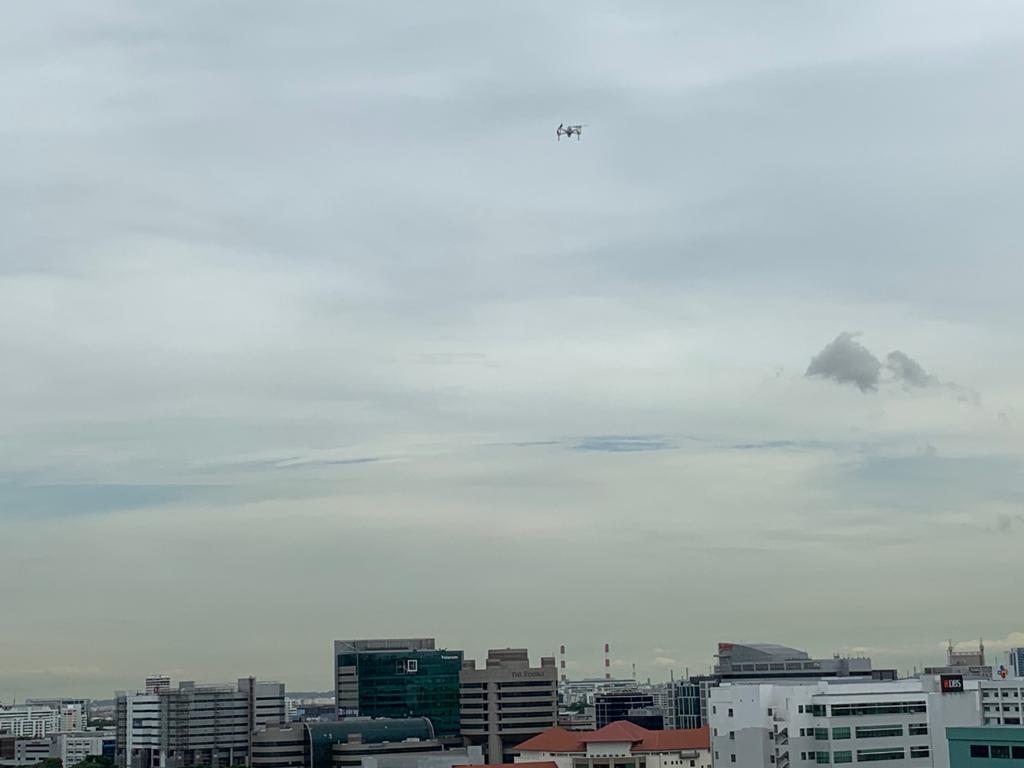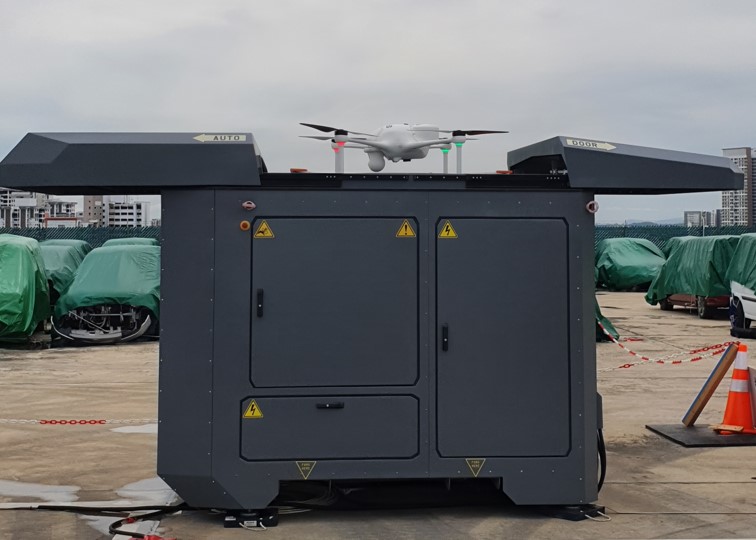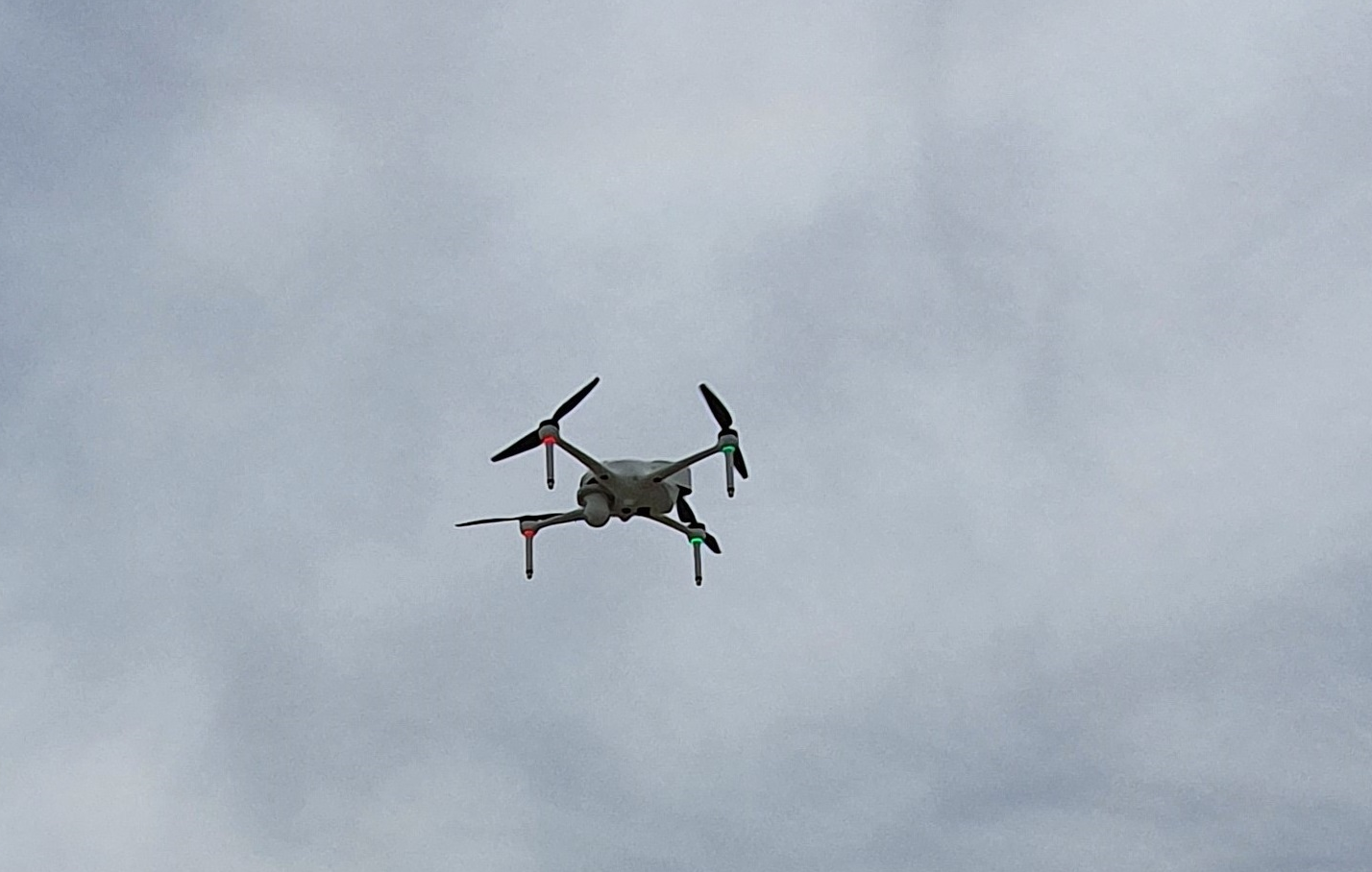 (Photos by HTX)
(Photos by HTX)
As whole-of-government efforts to contain the spread of COVID-19 intensified following the Circuit Breaker measures, HTX’s Robotics, Automation & Unmanned Systems (RAUS) Centre of Expertise collaborated with SPF to trial drone technology to support SPF’s ground operations.
In late April, HTX and SPF deployed two sets of drone box systems to survey an industrial estate located in the Western part of Singapore.
Flying High
The drones are launched autonomously from their respective drone boxes, monitored by the local Command and Control (C2) Centre operators. The drones are programmed to fly, via waypoints above the industrial estate to survey the perimeters and common areas, to track anomalies such as gatherings/congregations, etc. Live footage from the flights is streamed back to terminals at the backend Command Posts.
According to Senior Engineer Low Hsien Meng from RAUS, who is part of the deployment team, the drones provide a wide coverage. They can pinpoint locations and zoom into certain areas, which might not be clearly visible to police officers on foot patrol or in vehicles. He added that the drones therefore augment SPF’s operational resource and capability in ensuring safety and security during the Circuit Breaker period
 The Drone Box
The Drone Box
The Drone Box is an advanced mode of unmanned flight operation. The robotic automation system found within the drone box not only ensures that drone batteries are fully charged and ready to be installed, but also outfits the drones with the most effective payload for each specific operation. With the mundane and time consuming tasks taken care of by automation, the drone deployment team can focus on conducting the mission at hand.
The drone box solution is jointly developed by HTX, Airobotics Ltd and its local partner, SJ Defence Services Pte Ltd.
Propelling Forward

For this trial, HTX-SPF deployed the *Extended Visual Line of Sight (EVLOS), which will allow the team to collect important technical data through flying in an urban built environment, and develop confidence in operating in such challenging terrains. With the successful deployment of the EVLOS drone box system in this trial, the team hopes to progress to its eventual goal of operating full Beyond Visual Line of Sight (BVLOS) flight from these drone boxes autonomously.
As there is huge potential for BVLOS application in public safety, search and rescue and delivery of supplies, HTX is currently working with various Home Team departments to design and customise an effective BVLOS solution to meet their specific needs and requirements. For instance, HTX is also exploring the use of such technology to deliver Automated External Defibrillators to achieve a shorter response time.
*Most drone operators navigate Visual Line of Sight (VLOS) which means that flights are operated within the pilot’s line of sight. EVLOS flights require a safety pilot to eyeball the drone and take over control if required, while the primary drone operator can be situated within a control room. In BVLOS flights, the drone operator has no visual reference of the physical flight and depends on the instruments on-board the drone for situation awareness.
- end -

